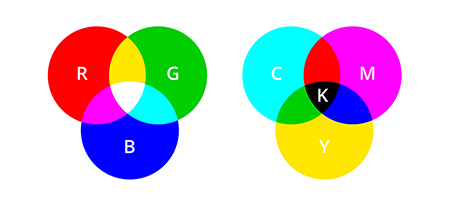RGB and CMYK are the two most common color modes used in graphic design. While they each have advantages, certain types of projects require specific modes. It is important to understand the differences between RGB and CMYK so you can choose the one that is best for your project.
RGB is an additive color model, while CMYK is subtractive. RGB uses white as a combination of all primary colors and black as the absence of light. CMYK, on the other hand, uses white as the natural color of the print background and black as a combination of colored inks. Designers and printers use the RGB color mode for media that will be viewed on a monitor and CYMK for print materials. CMYK subtracts colors from natural white light and turns them into pigments or dyes. Printers then put these pigments onto paper in tiny cyan, magenta, yellow, and black dots – spread out or close together to create the desired colors.
CMYK (Cyan, Magenta, Yellow and Black)
- Used for print
- Make up approximately 2 million+ colors when blended
RGB (Red, Green and Blue)
- Used for the web and monitors
- Can produce millions of color intensities when blended
Hexidecimal or HEX colors are expressed as a six-digit combination of numbers and letters defined by its mix of red, green, and blue (RGB). Software is needed to convert RGB into Hexidecimal colors.
Do you need help with creating or managing images! Give us a call at 847.541.4626 or send an email to johnw@incomarservices.com.

